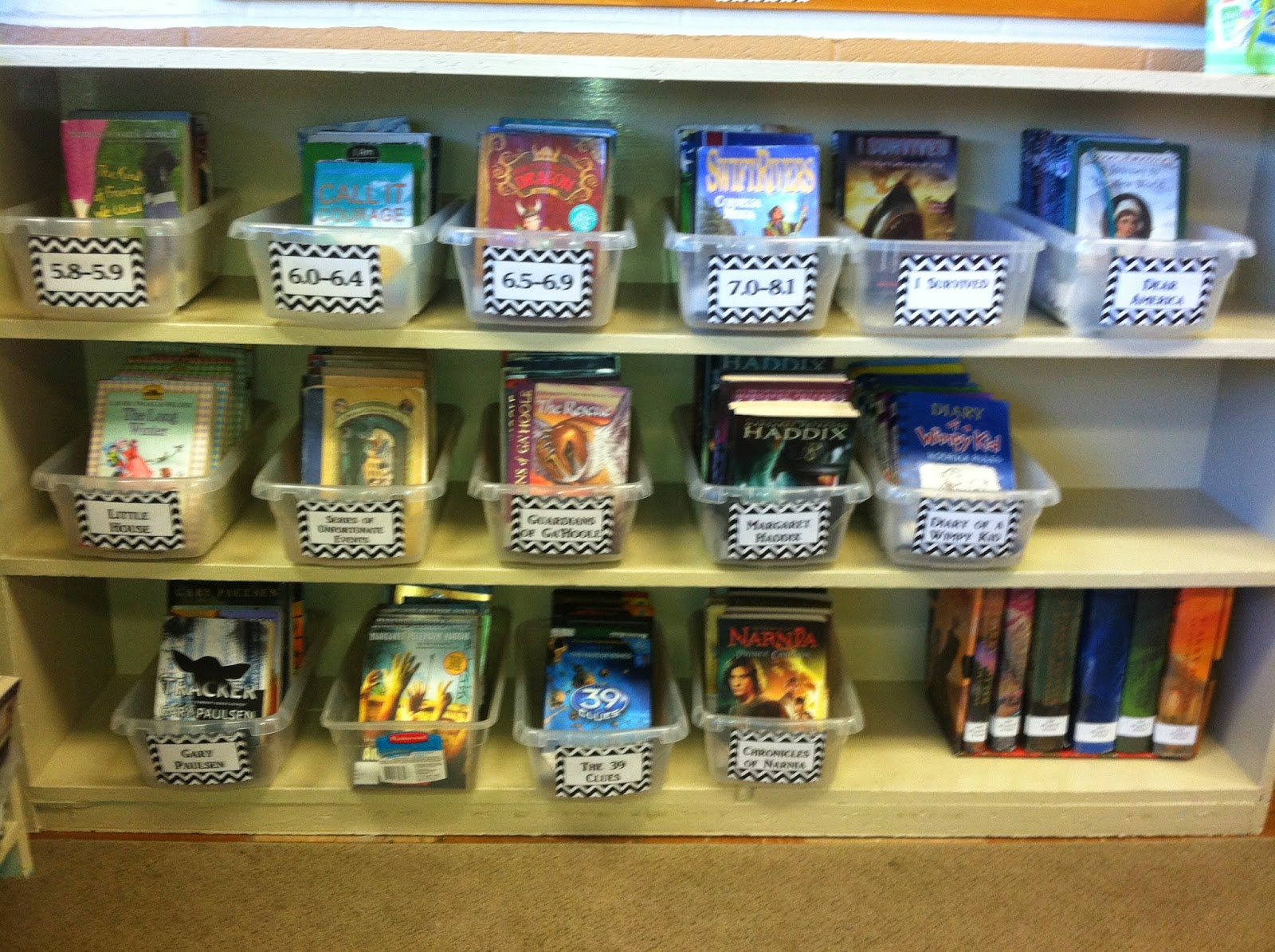How much money have you invested in your classroom library? If you are like most teachers, the answer isn’t one you really want to reveal…. 😉 Also, if you are like most teachers, you cringe every time you find one of your books crammed in the back of a student’s desk or returned with a torn cover.
A couple of years ago, as I looked at my fifth grade classroom library shelves stuffed with well-worn books in random, haphazard order, I realized how truly pathetic it was. How was my library even inviting students to be readers? Was I even modeling to my students how to value books? The answer was a sad, embarrassing “No.”
With that honest discovery, I began a summer-long project. Every one of the novels in my classroom worth keeping (mostly untorn, all pages still there) was taken home for the project. The rest of the mangled books were given to students at the end of the school year.
Contact Paper and scissors were my companions during the evenings while watching TV, and every novel was covered. I scored big at the Dollar Store with enough bins to house the newly covered books. I created labels showing the level of books in each bin and adhered it to the front with wide, clear tape. I loved, loved, loved the result.
My students love the ease of finding a book at their own AR Reading Level, too! Since the books have been covered, not one has met an early death! They all are still nicely covered and intact.
My Classroom Library Today
Today, I do not add new novels to my classroom library until I have covered them with Contact Paper. I want my investment to last! Want to know how to cover your books? Here is a tutorial showing you how!
1. Start with a roll of clear Contact Paper, a good pair of scissors, and any books you’d like to cover. I use a standard-width size roll. Place your book on the paper, and cut across the roll, leaving about a 3-4 inch margin on both the top and bottom of the book.
2. This is about the size of paper I use for each book. I do not measure, nor do I have it down to a science. I tried to measure for the first few books I covered and found it took much too long to do it that way. Now, I just estimate it, and the books turn out great!
3. Peel the backing off half the sheet of Contact Paper.
4. Firmly place your novel on the sticky surface of the exposed Contact Paper, toward the center line.
5. Cut diagonally across the exposed paper, making sure you cut right next to the corner of the book.
6. Repeat for both corners.
7. Open novel, fold in side flap of the sheet, and press firmly to adhere.
8. Remove paper backing of the remainder of the Contact Paper.
9. Turn the book over and press the sticky paper to its back cover. Make sure to smooth out any air bubbles between the Contact Paper and the book.
10. Trim off the corners of the paper for the back side of your book.
11. You’re almost there! Now, trim at an angle from the top of the Contact Paper to the spine and open edge of the book. Do this for both the front and the back of the book. Then, trim at an angle from the bottom of the Contact Paper to the spine and open edge of the book.
12. Fold flaps down and press to the surface of the inside of the covers of the book.
13. Trim off any excess paper at the top and bottom of the spine of the book.
14. You now have a nicely covered book! It will last much longer and more students will be able to enjoy it!
15. Organize your library and make it inviting for your students. You will be amazed at how many more students will want to read!
After your students are done reading, how about a super fun and engaging book report. This isn’t an ordinary book report either. Check out the
Cereal Box Book Report that will have your students begging to do book reports!



